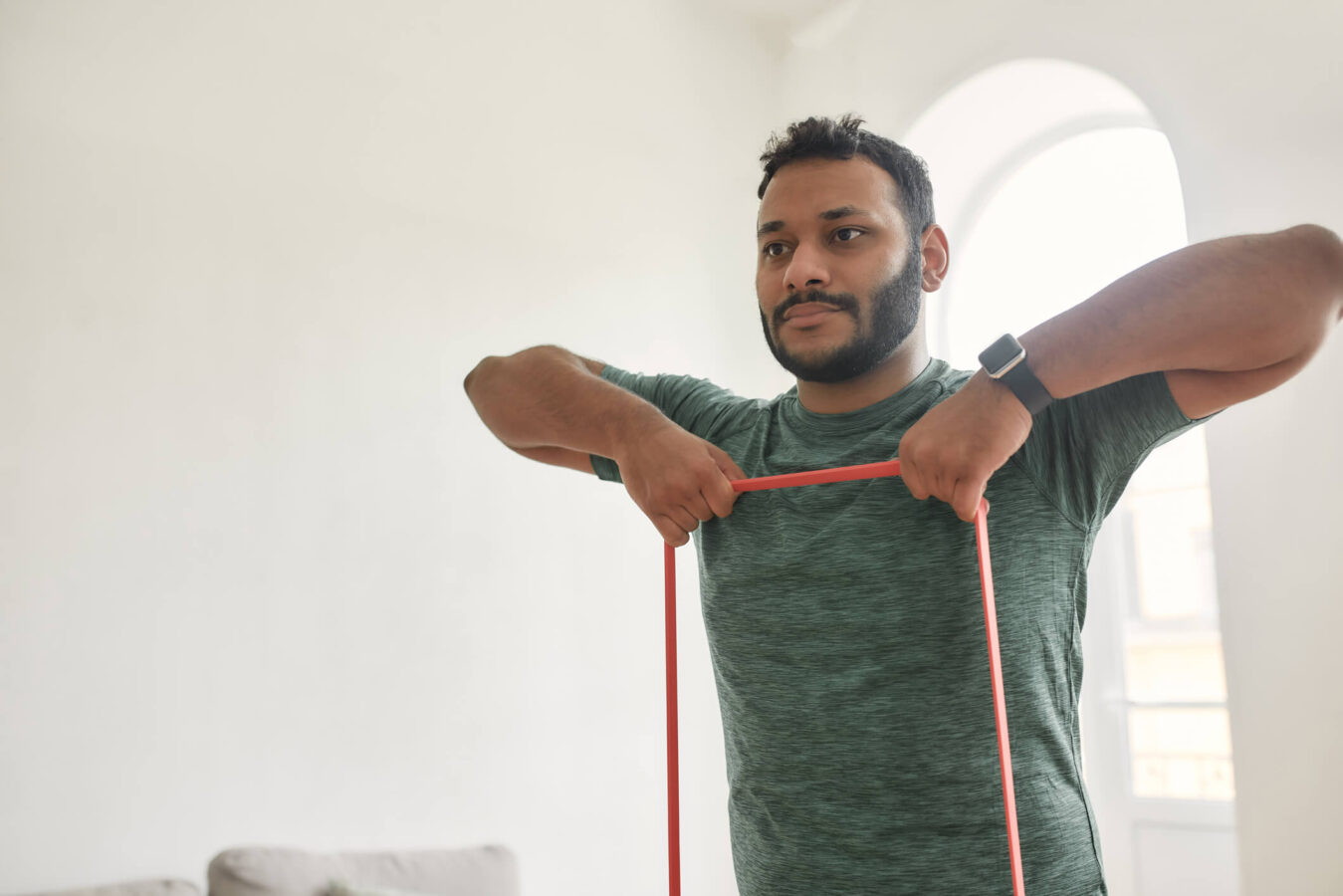
Medically reviewed by Misty Seidenburg
Whether you spend hours at a desk, train on the court or field, or are recovering from an injury, your shoulders work harder than you might realize. They’re involved in everything from lifting and reaching to posture and core stability. Yet with overuse, poor ergonomics, or a lack of movement, shoulder discomfort and imbalances can begin to occur. That’s where shoulder resistance band exercises come in. They offer a convenient and low-impact way to support shoulder health from almost anywhere.
Let’s explore how you can integrate resistance bands into your daily routine to promote shoulder health, support recovery, and safely build strength at home between physical therapy sessions.
Resistance bands provide variable tension throughout movement, helping you engage muscles through a full range of motion.
Here’s why bands are especially effective for strong and healthy shoulders:
Shoulder resistance band exercises offer a simple and effective way to support shoulder health for people of all activity levels. They can be used to help promote joint stability by strengthening the muscles surrounding the shoulder blade, which is essential for maintaining control and preventing strain during movement.
These low-impact exercises promote better posture, which is particularly beneficial for desk workers and individuals who spend extended periods on devices. Resistance bands encourage active mobility without the need for heavy weights or bulky gym equipment, making them a convenient option for home use. They also serve as a useful complement to many shoulder injury exercises commonly prescribed in physical therapy.
Note: Before starting any exercise program, always consult your provider or physical therapist to ensure these movements are suitable for you.
Below is a carefully selected list of resistance band moves that target the muscles involved in shoulder posture, mobility, and strength.
This exercise improves shoulder mobility and prepares your joints for movement. No resistance band needed.
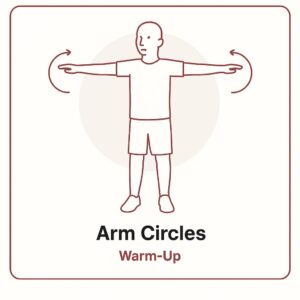
A staple in rotator cuff physical therapy, this movement helps strengthen the small stabilizers of the shoulder, which often weaken after injury or overuse. Rebuilding them is essential for joint stability.
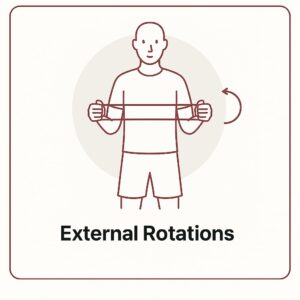
This is one of the most effective home shoulder exercises for counteracting the slouching that often occurs from sitting.
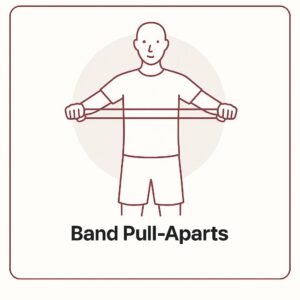
This mimics rowing and is especially beneficial for improving shoulder posture and conditioning the upper back.
Using a door anchor or wrapping the band around a secure object:
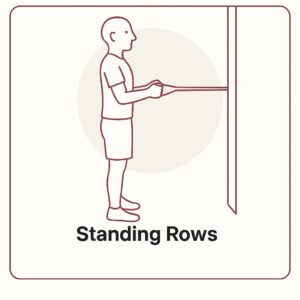
Reverse flys are excellent for building control and endurance in the upper back, the core goals for many shoulder injury exercise routines.
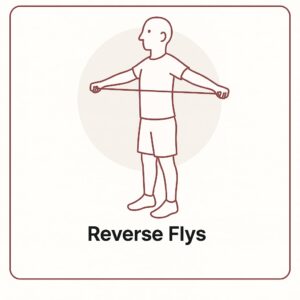
Now, let’s put all of these movements together. Here’s a beginner-friendly band workout for shoulder health and posture. Always begin with a light resistance level and focus on control over intensity.
Warm-Up
Main Circuit(Repeat 2–3 rounds)
To build strength, exercises should be completed with a band intensity that is fatiguing. You should only feel like you are able to do 1-2 more repetitions at the end of each exercise. With resistance bands, the amount of resistance increases as the band is stretched more.
If you are exercising and it feels a little too difficult, stand closer to where the band is anchored. When it gets too easy, you can either change to a different color or just stand farther away from where the band is anchored to increase the resistance.
Cool-Down Tip: Add light stretching for the chest and shoulders after your workout to promote flexibility and recovery.
Find a physical therapy clinic near you
Discover exceptional physical therapy care. Locate your nearest BenchMark Physical Therapy clinic today.
Sticking to a shoulder exercise routine doesn’t have to feel overwhelming. The key is to create small, sustainable habits that fit into your daily routine. Here are a few simple ways to do that:
Keep in mind that consistency matters more than intensity for shoulder resistance band exercises. Just a few minutes a day can lead to meaningful improvements over time.
Taking care of your shoulders doesn’t need to be complicated or time-consuming. With just a band and a few minutes a day, you can take confident steps toward better posture, mobility, and strength—wherever you are.
Find a physical therapy clinic near you to schedule a screening for shoulder pain and let a licensed professional tailor a physical therapy shoulder workout for your individual needs and goals.
Begin with basic exercises like external rotations, pull-aparts, and rows. Focus on slow, controlled reps using moderate resistance. Aim for 2–3 sessions per week, building gradually as your strength improves.
Resistance bands can help reduce the risk of injury by promoting muscle balance, control, and mobility. They are often used in shoulder injury exercises and injury prevention strategies, especially for overhead athletes or those with posture challenges.
For most home shoulder exercises, a flat resistance band about 4 feet long is sufficient. Loop bands or tube bands with handles also work well, depending on the exercise. The key is to choose a length that allows you to perform movements with good form and tension.